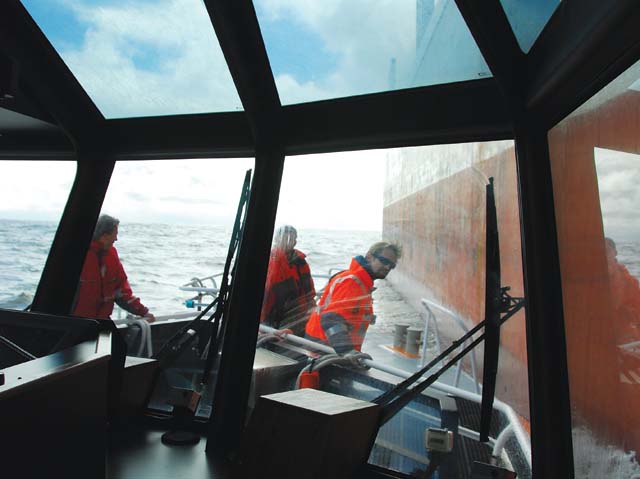Not too long ago, windows at a boatyard would be held up to the side of the pilothouse so a hole could be torched out for the opening.
Not anymore. These days those openings are CNC cut, which requires windows that are “more precisely made and built to closer tolerances,” said Ben Eby with Beclawat Manufacturing, a Canadian builder of marine windows and doors in Belleville, Ontario.
Changes in manufacturing technology have resulted in a higher level of consistency and greater repeatability. And while the owner of a tugboat company might not have the same high optical demands and appearance requirements for his windows as the owner of a megayacht, Eby sees some of those upscale influences filtering down to the workboat market.
“What you end up with is, things are prettier, and the general quality level is higher.”
A good example of workboat windows built to closer tolerances that provide that “prettier” effect is bonded windows. Bonded windows are applied to the hull or pilothouse with adhesive, so there’s no outside metal frame.
“That style of building tends to minimize the structure in between the windows, so you get more glass in a given area,” said Kvichak Marine’s Art Parker.
Bonded windows “give a smooth continuous look rather than having a bunch of windows bolted into a structure,” said Parker. “There might be six or seven pieces of glass, but it looks like one long continuous piece.”
Parker said they really like them, but bonded windows do have a downside. You can’t have a bonded sliding widow, so the boat either has to operate in a very cool climate or have air conditioning. That’s opposed to clamp-in windows, which are available in numerous sliding configurations.
All pilothouse windows, bonded or otherwise, must meet Coast Guard regs for visibility. Only windows facing up or to the side can be tinted. “Coast Guard rules don’t allow for tinted glass in navigation positions,” said Eby.
Though aftermarket products are available for tinting windows, tinting can be part of the manufacturing process. Not relying on an aftermarket film is “simpler, reliable and durable,” said Eby.
HATCH DESIGN FLEXIBILITY
Improvements in manufacturing processes have advantages for other types of closures besides windows. Freeman Marine Equipment in Gold Beach, Ore., can now quickly turn out a custom hatch based on a boat owner’s needs.
“Most of the time, hatch designs are fixed. You just can’t quickly come up with a new one,” said Freeman Marine sales manager Ron Dykes.
But the company has the ability to make a pattern and change the size. “We can tool right here and pour in our foundry per application. It’s very flexible and adaptable,” Dykes said.
This includes changes in the shape, depth and thickness of the hatch’s panels, the number of dogs, even the gasket material. “All that stuff is variable.”
While some outfits might be able to build a hatch model in different sizes and shapes, “to come up with a whole new combination of components to develop a new type of hatch, that’s an innovative ability not everyone has,” said Dykes.




